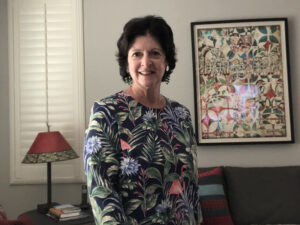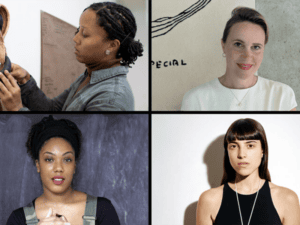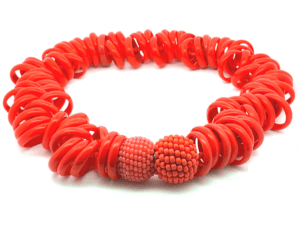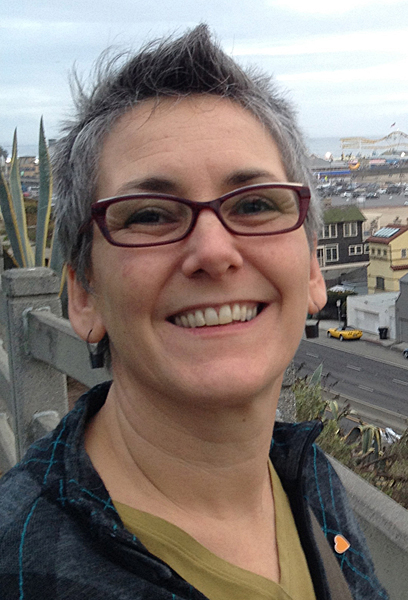
Susan Cummins: You are a forceful person and seem to have been born fully formed out of the head of Vulcan, but the baby Myra must have had a journey to get to your position of great silversmith and professor. Can you tell me how that happened?
Myra Mimlitsch-Gray: Wow Susan, that’s quite the lead in! I do have a thing for hammers, and as far as force, well, that’s probably the result of having four older brothers and parents who made physical labor into educational projects—fun for the whole family. In the 70s, we built a house together, and I was assigned the task of straightening nails for reuse. It turned out I was pretty good at it. The baby Myra wanted to be a painter and set out for art school. As it so often happens, the class I wanted was full, so I got stuck in a jewelry class. The bug bit, and that was that.
But really, the crafts were in me at the start. I recall sticking pins into dolls’ ears as a child, and I was a self-taught macramé artist, which resulted in some pretty awful jewelry. Camping trips prompted a fascination with technical planning, problem solving, teamwork, and modes of efficiency that inform my working methods today.
One of my teachers, Richard Reinhardt, described himself as a craftsman first and sometimes an artist. I can relate to this sensibility. I have set certain standards for my practice, and certain parameters determine my course of action. Yet at the same time, I am driven to rebel against such things, to challenge the rules. This interplay between expression and code underpins my creative process.
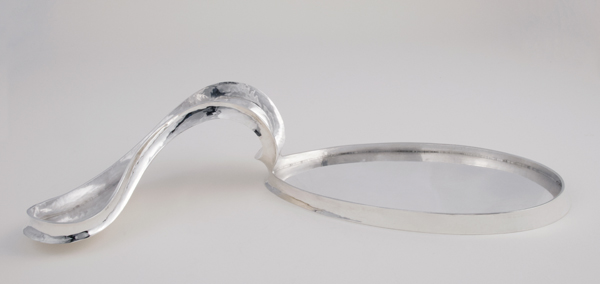
Teaching was inherited from my parents. They both taught high school science, and I think we were all a bit surprised by my drive toward the arts. While we had definite differences, we were strongly connected by the desire to share knowledge and the delight in learning. I think the collaborative venture we undertake in the classroom is also very motivational. I’ve had great role models in my teachers—Sharon Church, Rod McCormick, and Gary Griffin—all are exemplary through their dedicated pedagogy.
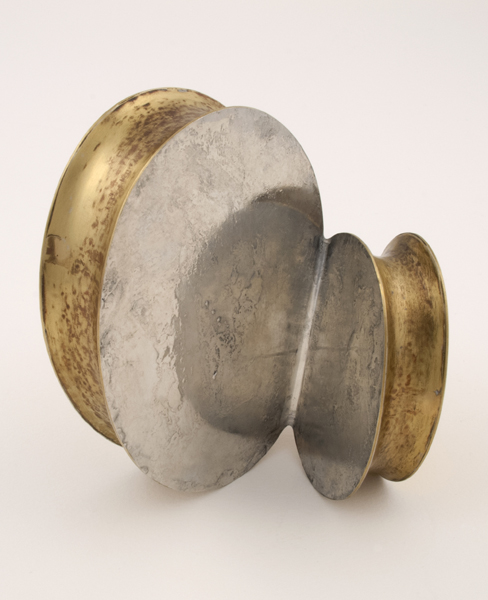
Myra Mimlitsch-Gray: Sometimes the trace of making is simply the way it is. Tools leave marks. Or it can be an aesthetic device, an evident signal to provoke the viewer or user. Operating from a position of skill, I choose when this trace is passive or active, and whether it provides clues to the content I am pursuing. In this way, the mark is literally crafted, and it functions ideologically.
I fabricate, both literally and metaphorically. I render facture. Seams and joints expose the process and undermine the image that an object may present. Something seemingly solid is suddenly not. The viewer is engaged in the fiction and analysis that is simultaneously evident. I am interested in the absurdity of making a thing that can be both banal and urgent, and I enjoy how, by the authority of craftsmanship, I can pull strings in both ways.
Do you believe in inspiration?
Myra Mimlitsch-Gray: No. Wait. Yes, of course! Many things inspire, but my postmodern upbringing often has me scrutinizing, interrogating, suspecting, and disbelieving. This disposition can anchor me from being swept away.
How does the work in the show called Something for the Table relate to historical pieces of silver hollowware? Or does it?
Myra Mimlitsch-Gray: As you know Susan, I have been around the block with the historical model in presentation silver and tableware. Throughout my career, I’ve made a commitment to investigating the format, the lexicon, the methods of realizing these canonical models toward new understandings of their role and relevance. My study of silver’s history was initially a way to break free from it, and also a way to pay homage to it, and I think I achieved this. And, there is a wonderful audience for this conversation, and I’m glad to have learned so much from it. But after 20 years, it was time to evaluate my own motives and solutions. When things become too comfortable, sentimental, or purely stylistic, it is time to move on. Frankly, there is a lot of formulaic work out there right now—the historic reference in a mashup of some kind—and the strategy is overplayed. I am bored by it. And while I know objects always have an embedded historical reference, I have made a concerted effort to find a new formal vocabulary for things on the table that do not rely on these evident trappings.
My current impulse is to study the effect on the material when acted upon, and then to make this the model for the object. Stretching, pulling, pushing, peeling—these basic, physical effects have been imagined and translated into metal forms. The resultant forms reside on the horizontal plane. The question is whether they supplant the traditional table objects. The table provides a support structure that emphasizes and reinforces the illustrated material condition. The latent energy interests me. These ostensibly static, low-profile objects are like lions lazing in the sun. The simple gesture and the fastidious translation—it is a bit like watching paint dry, which I seem to enjoy.
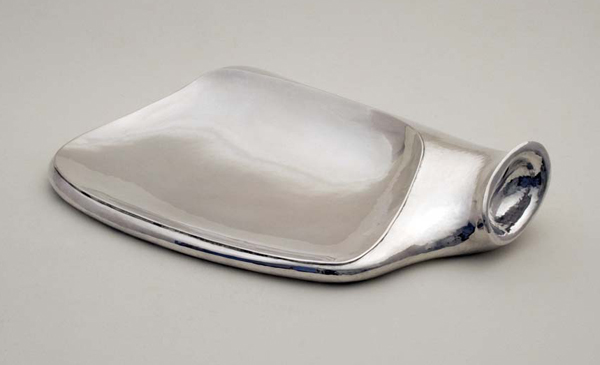
I asked your colleague Jamie Bennett a question that I would like to ask you as well. Can you reflect on your life as a professor?
Myra Mimlitsch-Gray: Yes, I enjoyed Jamie’s interview very much. Because we collaborate so much as colleagues, I can certainly agree with many of the points he made about the New Paltz program. There is much more team-teaching and an open plan for discourse and critique in the graduate program, which is wonderful. The undergraduate curriculum requires each of the faculty to tap into his or her individual skill sets more deeply, and then frequently compare notes to make sure we are all pointing toward the same general goals. There is a lot to cover.
I think I always knew I’d be teaching, but I had no idea how complicated it could be. When I was a student, it never occurred to me that I was learning a profession. I just wanted to learn. And then to unlearn. Today, I strive to maintain a productive environment that affords risk and failure, even though we are in this climate of underfunding education while requiring state-mandated standards and assessment protocol. There is a perpetual challenge to deliver the information I value as useful, to encourage personal expression and discovery, and to facilitate a culture where students can become confident, self aware, and strong advocates for their individual, personal vision while belonging to a creative community. “Leave with more questions than answers” is my overarching advice to those graduating. Inquiry sustains you.

Myra Mimlitsch-Gray: I wouldn’t say that. After all, my nail straightening using a scrap of 2×4 as an anvil was a terrific technical introduction. But, I have definitely enjoyed the privilege of posturing my work conceptually, which is afforded by the academic community. My work would be completely different without the support the institution provides. I get a paycheck, and that gives me the confidence to make very strange work that can serve as a theoretical model. In this way, I fulfill my responsibility to the academic community, exercise my prerogatives, and take advantage of academic freedom. I feel obligated to work outside of conventional expectations.
Can you give an example of one of the most challenging assignments that you give your students involving metalwork?
Myra Mimlitsch-Gray: Hmm…there are so many different approaches, and I tend to change it up each time. I’m assuming you are asking about direct experience with the material. You’d be surprised by the range of information we cover in our various classes. Some assignments focus on precision—you know, just getting it right. Others are geared toward developing a voice through the material and process.


Myra Mimlitsch-Gray: I see that many interviewees are reading the same jewelry books as I have. I’m currently reading several other things. Currently on the table and nightstand are: Failure: Documents of Contemporary Art, Lisa Le Fauvre, Ed.; The Tenth of December, George Saunders; Ken Price Sculpture, LACMA catalogue; and The Aesthetics of Imagination in Design, Mads Nygaard Folkmann. Add to that the many back issues of The New Yorker. Thankfully, summer provides time to catch up on these!
Susan, thanks for giving me the opportunity to answer your questions. I enjoyed it.
Thank you.


